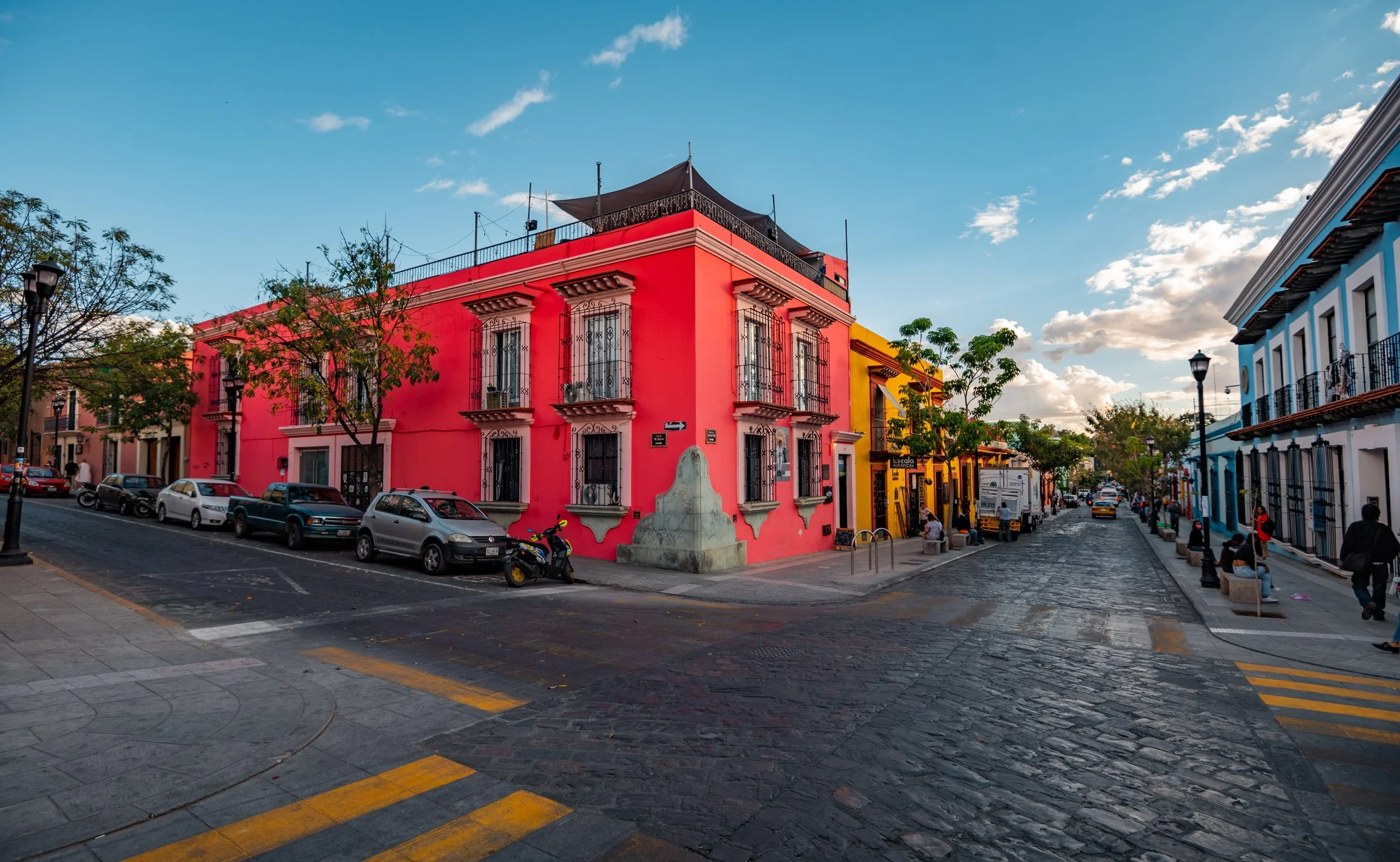In a world that often emphasizes stability in midlife, I've chosen an unconventional path for middle age—a nomadic way of life.
“The good thing about being nomadic,” I told my husband Hank two years into a decade-long migratory journey, “is that you discover how adaptable you are. The bad thing is that you’re forever forced to adapt.”
It was an idyllic March morning, with sunlight streaming into the bedroom of a central Mexico rental house. The temperature would reach seventy-five degrees by noon, but the breeze that slipped through the open window was still cool. I shivered in my bare feet on the tile floor as we padded out to the small covered patio just off the bedroom. Beyond the giant clusters of purple bougainvillea that spilled over the wall, we could see a shimmering blue expanse of lake and mountains rising in the distance. Bright-yellow warblers, red-headed finches, and boisterous kiskadees darted in and out of swaying palm trees. There was a quality to the morning light and the cheerful birdsong that made anything seem possible until a text message pinged. Our request to extend the house lease was denied. New tenants were already booked.
Later that afternoon, disappointment transformed into relief as we discovered that the owner intended to construct two new duplexes on the property. Construction was scheduled to begin soon. A wave of instant relief washed over me, and Hank shared the sentiment. Times like this kept us happy to be rootless—saved from the dust, disturbance, and blare of construction hammers and workers’ radios.
The next morning, we stopped by the office of a real estate agent from whom we’d rented in the past. By noon, we’d agreed to a six-month lease starting the following week at a quirky and charming two-story adobe house perched a few blocks above the town with lake and mountain views, a courtyard garden like a secret oasis, and colorful handwoven cushions strewn about in cheery bursts of joy.
Change kept rising with each passing day, week, month, and year, pitching us forward with waves of calm and upset. Not what I’d imagined in my younger years how my fifties would be. However, realizing that adaptation could be reframed as an opportunity for something better was merely one of the many lessons from our wanderings I had grown to appreciate.
While not a path suited for everyone, nomadic travel holds unexpected rewards. It's a lifestyle that, for me, has provided a doorway into a much larger world of emotional discovery and a growing comfort with change, uncertainty, and vulnerability.
Here are ten advantages to embracing nomadism in midlife—or at any stage of life.
Cultural Immersion
Spending more time in a destination allows you to immerse yourself in the local culture. You can try traditional foods, participate in local festivals, learn the language, and interact with residents more meaningfully. This immersive experience can lead to a deeper understanding and appreciation of the local way of life.
Deeper Exploration
Long-stay travel lets you explore a destination more thoroughly. You can venture beyond the tourist hotspots and discover hidden gems, lesser-known attractions, and off-the-beaten-path experiences that might not be possible on a shorter trip.
Less Rush, More Relaxation
With an extended period, you can adopt a slower pace of travel. This allows you to truly relax, avoid the stress of rushing from one sight to another, and enjoy a more leisurely and authentic experience.
Meaningful Connections
Long stays allow you to forge deeper connections with locals and fellow travelers. You can build lasting friendships, engage in meaningful conversations, and establish a sense of community that might be harder to achieve during a shorter trip.
Personal Growth
Extended travel challenges you to step out of your comfort zone, adapt to new environments, and solve unfamiliar problems. This can lead to personal growth, increased self-confidence, and improved problem-solving skills.
Learning Experiences
Long-term travel allows for learning new skills or hobbies. Whether taking local cooking classes, learning traditional crafts, or engaging in outdoor activities, you can acquire knowledge beyond typical tourist experiences.
Cost Savings
In some cases, staying in a destination for an extended period can be more cost-effective than multiple short trips. You might be able to negotiate better rates for accommodation, find local deals, and manage your budget more efficiently.
Reduced Environmental Impact
Long-stay travel often involves fewer flights, a car-free lifestyle, and less frequent transportation, contributing to a lower carbon footprint than frequent short-haul trips.
Embracing Slower Living
Long-stay travel encourages you to adopt a slower and more mindful approach to life. This can lead to reduced stress, improved mental well-being, and a greater appreciation for the present moment.
Diverse Living Environments
Long-term travelers can choose living accommodations that suit the destination, whether a trendy urban apartment, a country cottage with a view, or a unique housing option like a boat. Temporary housing is a risk-free way of experimenting and clarifying preferences and new perspectives for the future.
It's important to note that while long-stay travel offers numerous benefits, it also comes with challenges, such as dealing with homesickness, visa regulations, and potential language barriers. However, the benefits often outweigh the challenges for those seeking a more in-depth and immersive travel experience.
If you enjoyed this or learned something, share the post with others and follow me, Ellen Barone, for more in the future!

